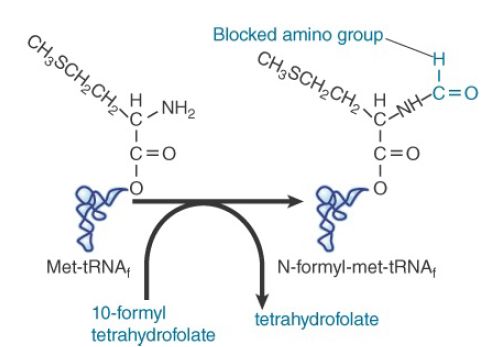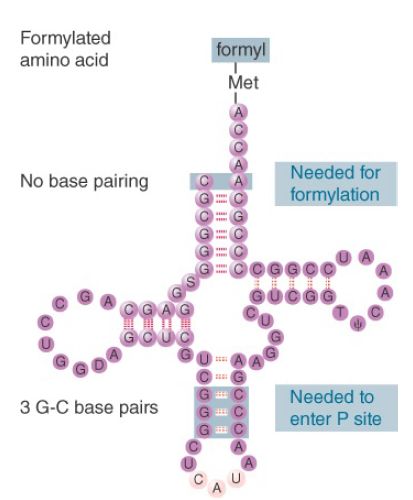

النبات

مواضيع عامة في علم النبات

الجذور - السيقان - الأوراق

النباتات الوعائية واللاوعائية

البذور (مغطاة البذور - عاريات البذور)

الطحالب

النباتات الطبية


الحيوان

مواضيع عامة في علم الحيوان

علم التشريح

التنوع الإحيائي

البايلوجيا الخلوية


الأحياء المجهرية

البكتيريا

الفطريات

الطفيليات

الفايروسات


علم الأمراض

الاورام

الامراض الوراثية

الامراض المناعية

الامراض المدارية

اضطرابات الدورة الدموية

مواضيع عامة في علم الامراض

الحشرات


التقانة الإحيائية

مواضيع عامة في التقانة الإحيائية


التقنية الحيوية المكروبية

التقنية الحيوية والميكروبات

الفعاليات الحيوية

وراثة الاحياء المجهرية

تصنيف الاحياء المجهرية

الاحياء المجهرية في الطبيعة

أيض الاجهاد

التقنية الحيوية والبيئة

التقنية الحيوية والطب

التقنية الحيوية والزراعة

التقنية الحيوية والصناعة

التقنية الحيوية والطاقة

البحار والطحالب الصغيرة

عزل البروتين

هندسة الجينات


التقنية الحياتية النانوية

مفاهيم التقنية الحيوية النانوية

التراكيب النانوية والمجاهر المستخدمة في رؤيتها

تصنيع وتخليق المواد النانوية

تطبيقات التقنية النانوية والحيوية النانوية

الرقائق والمتحسسات الحيوية

المصفوفات المجهرية وحاسوب الدنا

اللقاحات

البيئة والتلوث


علم الأجنة

اعضاء التكاثر وتشكل الاعراس

الاخصاب

التشطر

العصيبة وتشكل الجسيدات

تشكل اللواحق الجنينية

تكون المعيدة وظهور الطبقات الجنينية

مقدمة لعلم الاجنة


الأحياء الجزيئي

مواضيع عامة في الاحياء الجزيئي


علم وظائف الأعضاء


الغدد

مواضيع عامة في الغدد

الغدد الصم و هرموناتها

الجسم تحت السريري

الغدة النخامية

الغدة الكظرية

الغدة التناسلية

الغدة الدرقية والجار الدرقية

الغدة البنكرياسية

الغدة الصنوبرية

مواضيع عامة في علم وظائف الاعضاء

الخلية الحيوانية

الجهاز العصبي

أعضاء الحس

الجهاز العضلي

السوائل الجسمية

الجهاز الدوري والليمف

الجهاز التنفسي

الجهاز الهضمي

الجهاز البولي


المضادات الميكروبية

مواضيع عامة في المضادات الميكروبية

مضادات البكتيريا

مضادات الفطريات

مضادات الطفيليات

مضادات الفايروسات

علم الخلية

الوراثة

الأحياء العامة

المناعة

التحليلات المرضية

الكيمياء الحيوية

مواضيع متنوعة أخرى

الانزيمات
A Special Initiator tRNA Starts the Polypeptide Chain
المؤلف:
JOCELYN E. KREBS, ELLIOTT S. GOLDSTEIN and STEPHEN T. KILPATRICK
المصدر:
LEWIN’S GENES XII
الجزء والصفحة:
24-5-2021
2518
A Special Initiator tRNA Starts the Polypeptide Chain
KEY CONCEPTS
-Translation starts with a methionine amino acid usually encoded by AUG.
-Different methionine tRNAs are involved in initiation and elongation.
-The initiator tRNA has unique structural features thatdistinguish it from all other tRNAs.
- The amino group of the methionine bound to the bacterial initiator tRNA is formylated.
Synthesis of all polypeptides starts with the same amino acid—methionine. tRNAs recognizing the AUG codon carry methionine, and two types of tRNA can carry this amino acid. One is used for initiation, the other for recognizing AUG codons during elongation.
In bacteria, mitochondria, and chloroplasts, the initiator tRNA carries a methionine residue that has been formylated on its amino group, forming a molecule of N-formyl-methionyl-tRNA. The tRNA is known as tRNAf-Met. The name of the aminoacyl-tRNA is usually abbreviated to fMet-tRNAf .
The initiator tRNA gains its modified amino acid in a two-stage reaction. First, it is charged with the amino acid to generate MettRNA , and then the formylation reaction shown in Figure 1 blocks the free amino (–NH2 ) group. Although the blocked amino acid group would prevent the initiator from participating in chain elongation, it does not interfere with the ability to initiate a polypeptide.

FIGURE 1. The initiator N-formyl-methionyl-tRNA (fMet-tRNAf ) is generated by formylation of methionyl-tRNA using formyltetrahydrofolate as a cofactor.
This tRNA is used only for initiation. It recognizes the codons AUG or GUG (or occasionally UUG). The codons are not recognized equally well; the extent of initiation declines by about half when AUG is replaced by GUG, and declines by about half again when UUG is used.
The tRNA type responsible for recognizing only AUG codons following the initiation codon is tRNAmMet . Its methionine cannot be formylated.
What features distinguish the fMet-tRNAf initiator and the MettRNAm elongator? Some characteristic features of the tRNA sequence are important, as summarized in Figure 2. Some of these features are needed to prevent the initiator from being used in elongation, whereas others are necessary for it to function in initiation:
- Formylation is not strictly necessary because nonformylated Met-tRNAf can function as an initiator. However, formylation improves the efficiency with which the Met-tRNAf is used because it is one of the features recognized by IF-2, which binds the initiator tRNA.
- The bases that face one another at the last position of the stem to which the amino acid is connected are paired in all tRNAs except tRNAf Met . Mutations that create a base pair in this position of tRNAf Met allow it to function in elongation. Therefore, the absence of this pair is important in preventing tRNAf Met from being used in elongation. It is also needed for the formylation reaction.
- A series of three G-C pairs in the stem that precedes the loop containing the anticodon is unique to tRNAf Met . These base pairs are required to allow the fMet-tRNAf to be inserted directly into the P site.

FIGURE 22.15 fMet-tRNAf has unique features that distinguish it as the initiator tRNA.
In bacteria and mitochondria, the formyl residue on the initiator methionine is removed from the protein by a specific deformylase enzyme to generate a normal NH2 terminus. If methionine is to be the N-terminal amino acid of the protein, this is the only necessary step. In about half of the polypeptides, the methionine at the terminus is removed by an aminopeptidase, which creates a new terminus from R2 (originally the second amino acid incorporated into the chain). When both steps are necessary, they occur sequentially. The removal reaction(s) occur(s) rather rapidly when the nascent polypeptide chain has reached a length of about 15 amino acids.
 الاكثر قراءة في مواضيع عامة في الاحياء الجزيئي
الاكثر قراءة في مواضيع عامة في الاحياء الجزيئي
 اخر الاخبار
اخر الاخبار
اخبار العتبة العباسية المقدسة

الآخبار الصحية















 قسم الشؤون الفكرية يصدر كتاباً يوثق تاريخ السدانة في العتبة العباسية المقدسة
قسم الشؤون الفكرية يصدر كتاباً يوثق تاريخ السدانة في العتبة العباسية المقدسة "المهمة".. إصدار قصصي يوثّق القصص الفائزة في مسابقة فتوى الدفاع المقدسة للقصة القصيرة
"المهمة".. إصدار قصصي يوثّق القصص الفائزة في مسابقة فتوى الدفاع المقدسة للقصة القصيرة (نوافذ).. إصدار أدبي يوثق القصص الفائزة في مسابقة الإمام العسكري (عليه السلام)
(نوافذ).. إصدار أدبي يوثق القصص الفائزة في مسابقة الإمام العسكري (عليه السلام)


















